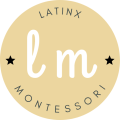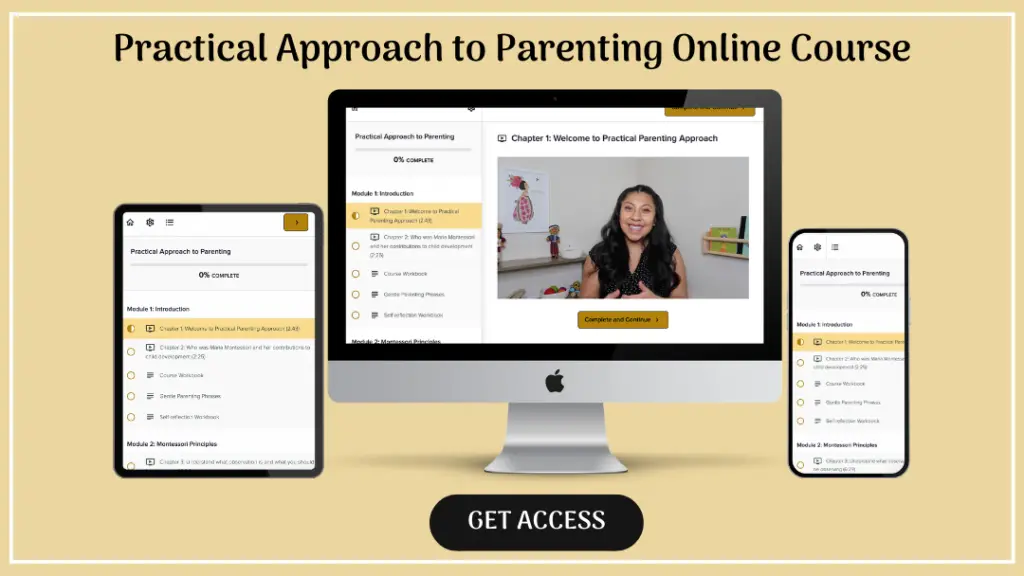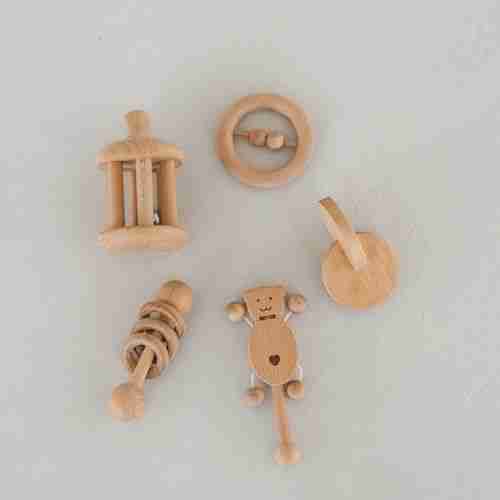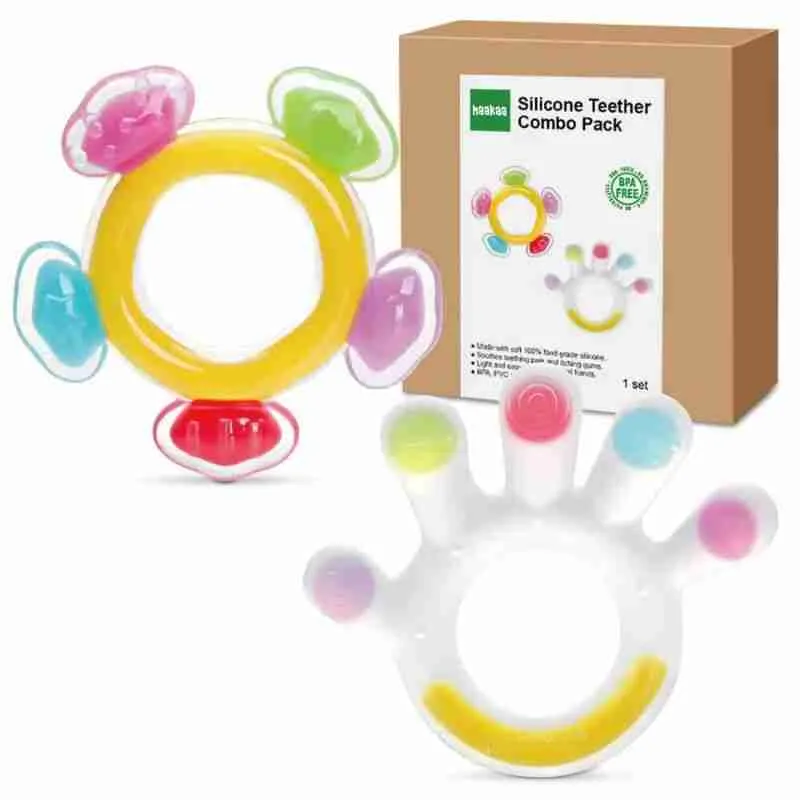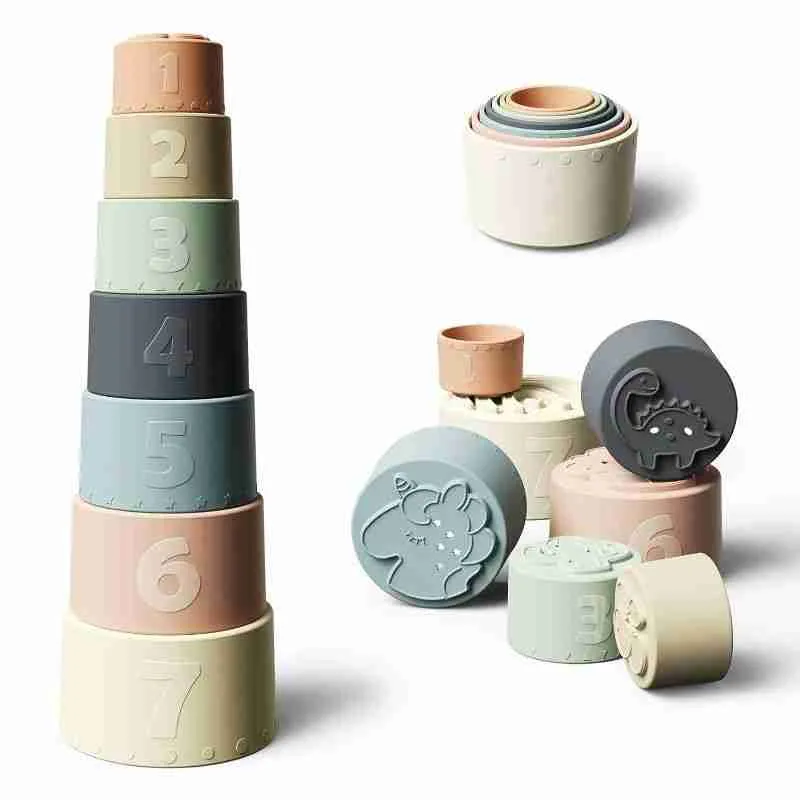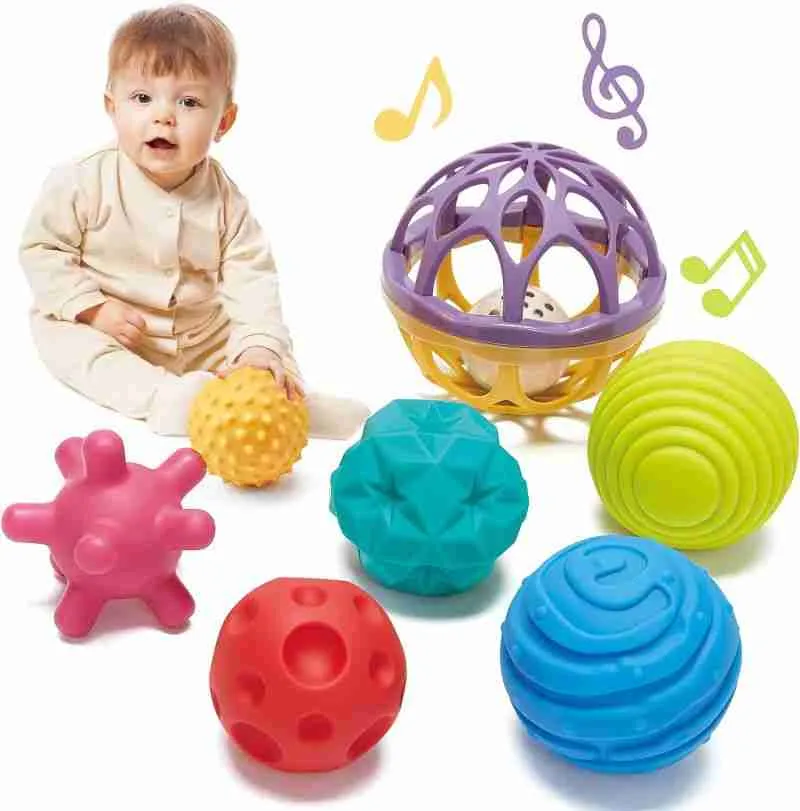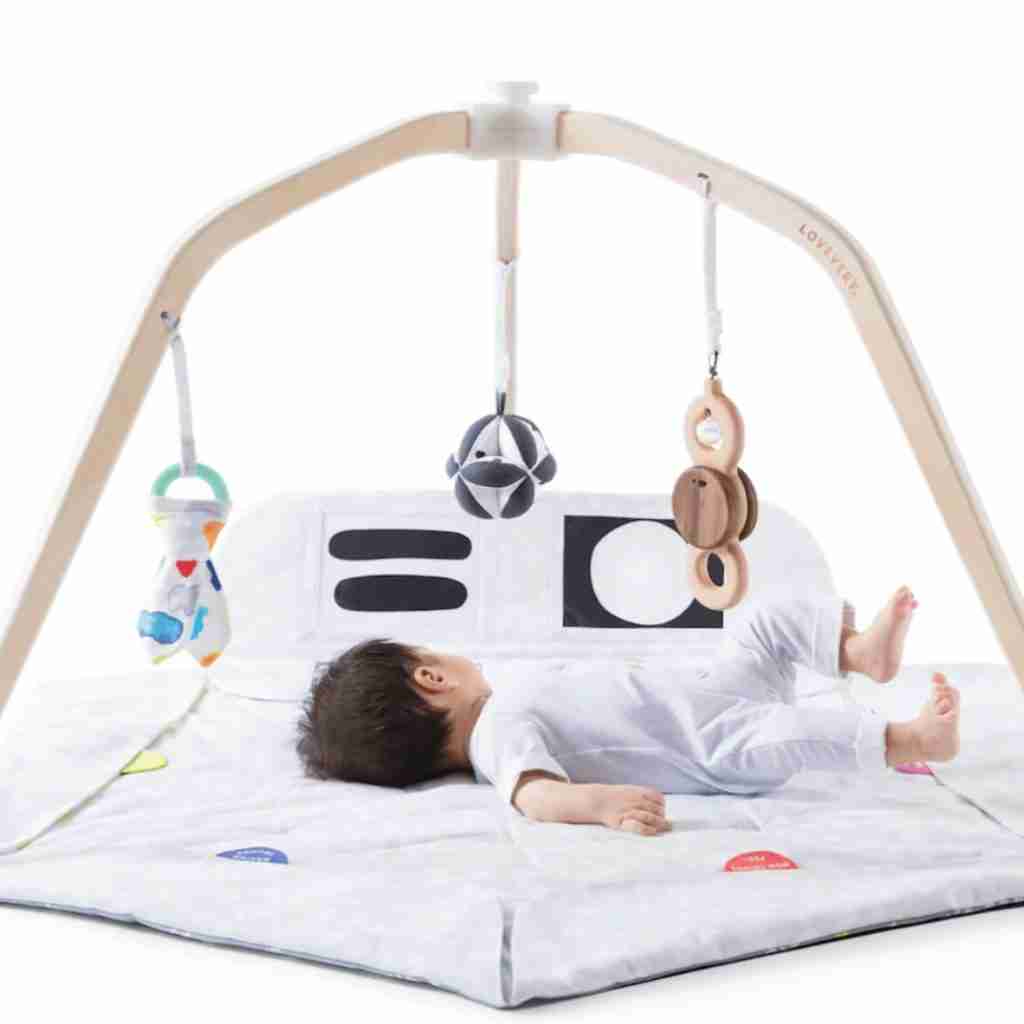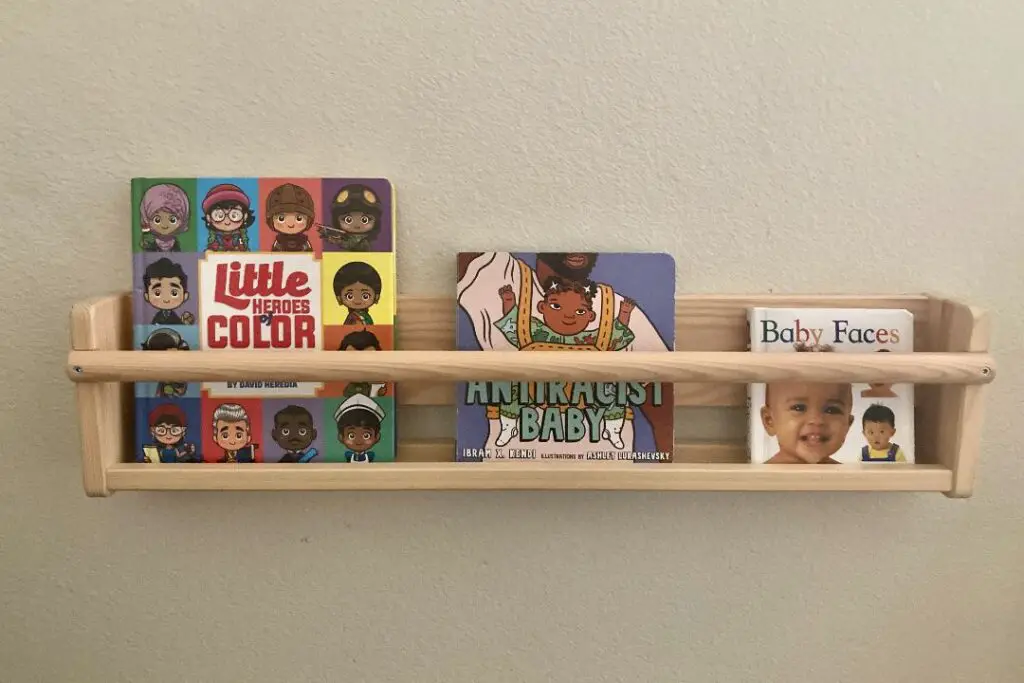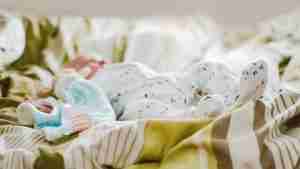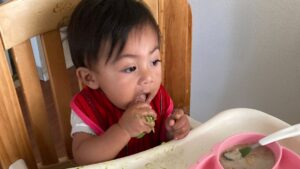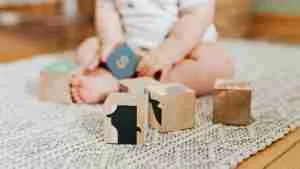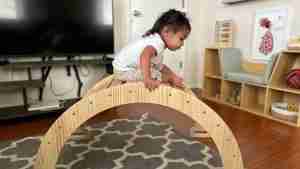
9 best Montessori toys for 6 month old babies
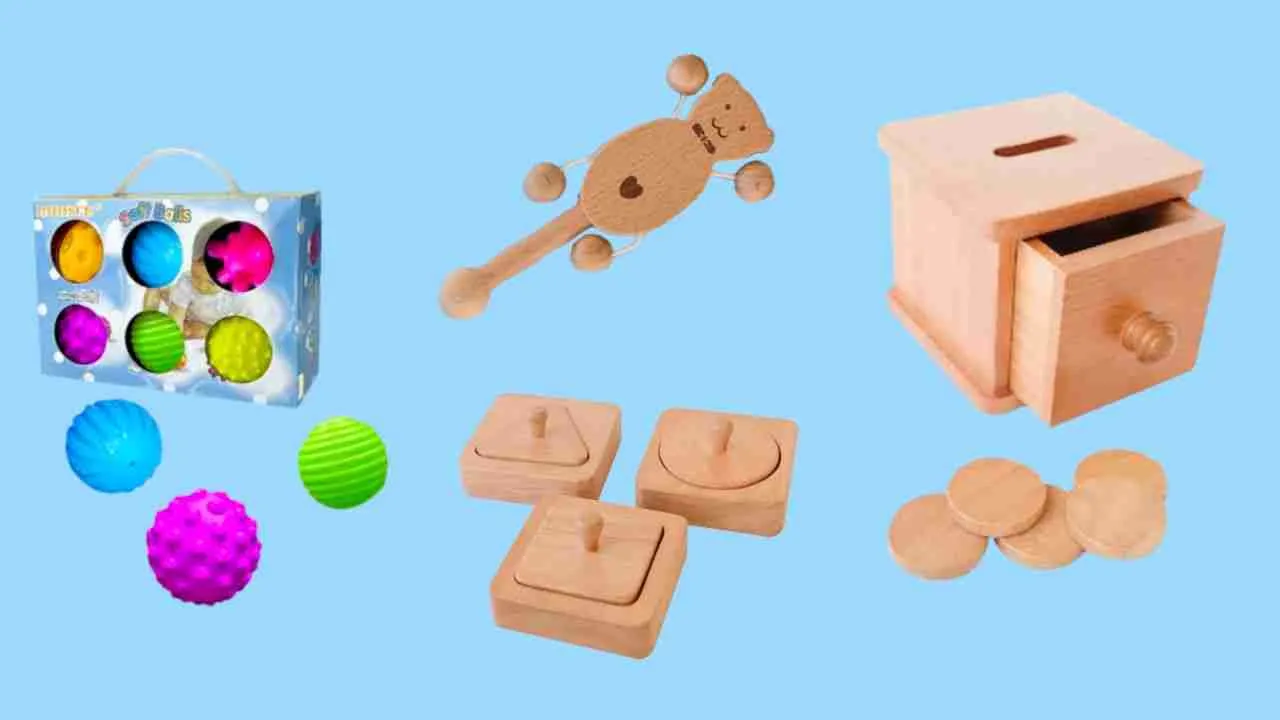
*Disclosure: I only recommend products I would use myself and all opinions expressed here are our own. This post may contain affiliate links that at no additional cost to you, I may earn a small commission. Thank you for your support!
Share this post
These are the best Montessori toys for 6 month old babies to improve their fine and gross motor skills and cognitive development.
But these are not just any toys.
As a Montessori guide and a parent, I know the impact of these Montessori toys on your child’s development.
While they may seem simple, they offer your child an opportunity to explore, stimulate their senses, and improve their focus and concentration.
So from parent to parent, we are positive that these Montessori-aligned toys will play an important role in your child’s holistic development.
Full list of Montessori toys for 6 month old babies
Best to enhance tactile and auditory senses: Wooden rattles.
Best for oral exploration and hand-eye coordination: Teething rings.
Best to enhance hand strength and precision: Stacking cups.
Best to improve physical strength and balance: Ball tracker.
Best for sensory exploration: Sensory balls.
Best for overall development: Activity gym.
Best for language development: Books.
Best to enhance memory and concentration: Object permanence box.
- Best to develop logical thinking and visual perception: Puzzles.
What are the best Montessori toys for 6 month old babies?
We strategically chose these toys to improve your child’s fine and gross motor skills and cognitive development which we believe are fundamental for your baby’s overall growth.
Montessori toys for fine motor skills
1. Wooden rattles
Wooden rattles will foster your baby’s fine motor skills and auditory and tactile senses.
One of the main reasons why we always recommend wooden rattles is because they promote fine motor skill development.
They are not just a fun tool to entertain your baby; they provide a multi-sensory experience for your little one because they stimulate the senses of hearing, touch, and sight.
The rattling sound captures their attention and they will naturally want to explore more.
Your baby will learn how to grasp and hold the rattle and this can also help develop hand-eye coordination and grasping skills.
There are many activities you can do to get full use of these rattles.
We recommend you get raddles of different sizes and shapes and encourage your baby to shake them to produce different sounds.
This will stimulate their auditory senses and help develop their hand movements.
You can also provide raddles made of different materials so your baby can explore the different textures of the rattle to enhance their tactile senses and curiosity.
2. Teething rings
Teething rings soothe gums and support oral exploration.
We all know that teething rings are great when your baby is teething. But they are more than just a way to soothe a fussy baby.
We used freezable teething rings as a way to enhance our daughter’s hand-eye coordination and oral exploration.
And let’s be honest, babies put everything in their mouths because this is how they explore textures and objects.
The textured surface of the rings will encourage your baby to explore and manipulate the toy.
Also, your baby will improve their grasping skills and fine motor skills as they learn to hold teething rings of various shapes and sizes.
Something we did with our daughter was freezing the teething rings and then giving them to her because the cold sensation provided a unique sensory experience.
3. Stacking cups
Stacking cups will enhance your baby’s hand strength and precision through nesting and stacking activities.
There are so many things your baby can do with stacking cups. We’ve had ours for a while and our daughter still uses them.
Stacking cups are a great toy for your baby to improve their spatial awareness, problem-solving skills, hand strength, and precision.
Your baby can stack these cups together or nest them inside each other. Simply allow your baby to experiment with different arrangements.
As your baby grasps and stacks the cups, they develop fine motor skills and hand-eye coordination.
At 6 months old, your baby will find it very challenging grasping and placing one cup on top of the other but it will be rewarding to see your baby complete this task.
And just to give you a simple parenting tip, get stacking cups of various colors and arrange them in a visually appealing pattern or color sequence to make the activity more visually stimulating.
Montessori toys for gross motor skills
4. Ball tracker
The ball tracker toy will promote your baby’s hand-eye coordination and understanding of cause and effect.
From personal experience, this is a great way to help your baby control large muscles of their body which help them crawl and eventually walk.
Our daughter was able to maintain a stable posture simply by picking up the ball, standing up, and placing it on top of the ball tracker.
This repetitive movement strengthened her back, core, and leg muscles which we credit to her walking at only 9 months old.
Something we did for extra fun was placing the ball away from the toy so she could crawl to get the ball.
We also used balls made of different materials such as wood, rubber, and ping pong balls to show our daughter how different textures affect the rolling speed.
5. Sensory balls
Sensory balls can stimulate your baby’s senses of sight, touch, and movement.
This is a toy that every infant should have to stimulate their senses. Sensory balls usually come in various textures and this allows your child to feel the dents, soft spikes, or bumps.
This sensorial stimulation is essential for brain development and learning because it builds nerve connections and encourages the development of language and motor skills.
But this is not the only way to use them. We used sensory balls to help our daughter to crawl, roll, and throw.
Instead of giving her a ball, we placed it a short distance from her and she naturally crawled to get it.
If your baby is learning to walk, you can do something similar to encourage your baby to get it independently.
6. Activity gym
Activity gyms provide a variety of sensory and motor experiences and help your baby to reach, grab, and kick.
When our daughter was born, we got her the Lovevery Play Gym that she used for the first year. And trust us when we tell you that this is a MUST-HAVE item for your baby.
The great thing about the play gym is that it grows with your child and has everything they need to promote their overall development.
It has various sensory and motor skill activities to help your baby practice reaching, grabbing, and kicking to strengthen their muscles and fine-tune their movements.
It also helps your baby identify colors, shapes, sounds, and textures.
The play gym comes with a guide that walks you through every developmental stage and shows you how to modify each activity.
Montessori toys for cognitive development
7. Books
Books are an effective way to introduce your baby to language, colors, and shapes through storytelling.
We have a large selection of books on our Amazon storefront. We intentionally curated these books to help your baby with language development.
The biggest benefit of reading to your infant is that books expose them to new words, sounds, and images.
They also stimulate their senses because your baby will see different images and colors and this repetitive and consistent stimulation strengthens the electrical connections in the brain.
Now, we are going to share a few tips you can use when you read to your baby.
Use different voices, expressions, and gestures to make the story more engaging. Trust us, your baby will be more interested in the book when you get creative.
Also, try to select books that are appropriate for your baby’s age and interest, such as board books, cloth books, or books with flaps or textures.
Let your baby touch, hold, and turn the pages of the books because the whole idea is to let your baby explore on their own.
And as you read books, ask your baby questions about the story, such as “What do you see?” or “What do you think will happen next?”
Always try to involve your child in the story and have a conversation instead of just reading to them.
8. Object permanence box
The object permanence box enhances your baby’s memory and concentration as they engage in repetitive hide-and-seek play.
This is another classic Montessori toy and one we highly recommend to nurture your baby’s concentration and memory.
At this age, your baby thinks that an object does not exist anymore if it is out of sight.
But the object permanence box teaches your baby the concept of object permanence, which is the understanding that objects continue to exist even when they don’t see.
This concept is important for your baby’s cognitive and emotional development because it helps them to form attachments, memory, and problem-solving skills.
And your baby will improve their memory as they learn to remember where the object went and how to retrieve it.
There are various types of object permanence boxes but we recommend you start with a simple one that has one hole and one ball.
Show your baby how to drop the ball into the hole and watch it reappear in the tray. Once your baby masters this skill, you can get an object permanence box with a drawer.
The drawer adds another level of complexity because your baby will have to learn how to open the drawer and retrieve the ball.
You can then gradually introduce more complex object permanence boxes that have multiple holes, balls, or shapes, and challenge your baby to match the correct shape to the hole.
9. Puzzles
Puzzles will challenge your baby’s hand-eye coordination and fine motor skills as they piece together shapes and colors.
Puzzles have been an important part of our daughter’s development because they challenge her to think outside the box and problem-solve.
These simple toys play a crucial role in developing your baby’s logical thinking and visual perception as they learn to fit, stack, and nest the pieces in different ways.
Your baby also improves their hand-eye coordination and fine motor skills because they learn to grasp, release, and place the pieces in the correct spot.
When you introduce puzzles, begin with simple Montessori-inspired one-piece puzzles that are easy for your baby to grasp.
We like the ones from Montessori and Me because they have small knobs that help your baby practice their pincer grasp.
You can slowly introduce more complex puzzles like this circle sorter to challenge your baby’s critical thinking skills.
Why trust my recommendations
With many years of hands-on experience as a Montessori Guide and child development expert, I bring a unique blend of professional expertise and parental insight.
As a parent of a toddler myself, I understand the joys and challenges of navigating early childhood development.
My recommendations come from a deep understanding of developmentally appropriate toys and through years of working directly with children.
I am an advocate for a holistic approach grounded in the Montessori philosophy and this means that each recommendation is backed by practical experience.
We’ve personally used many toys in this list and I am confident that they will have a positive impact on your child’s physical and cognitive development too.
What to do next?
These are the best Montessori toys for 6 month old babies. We created a comprehensive list of Montessori toys, gifts, and products to aid in your child’s development.
If you shop on Montessori and Me or My Monte Home, make sure to use our personal code LATINXMONTESSORI to get 10% off your order.
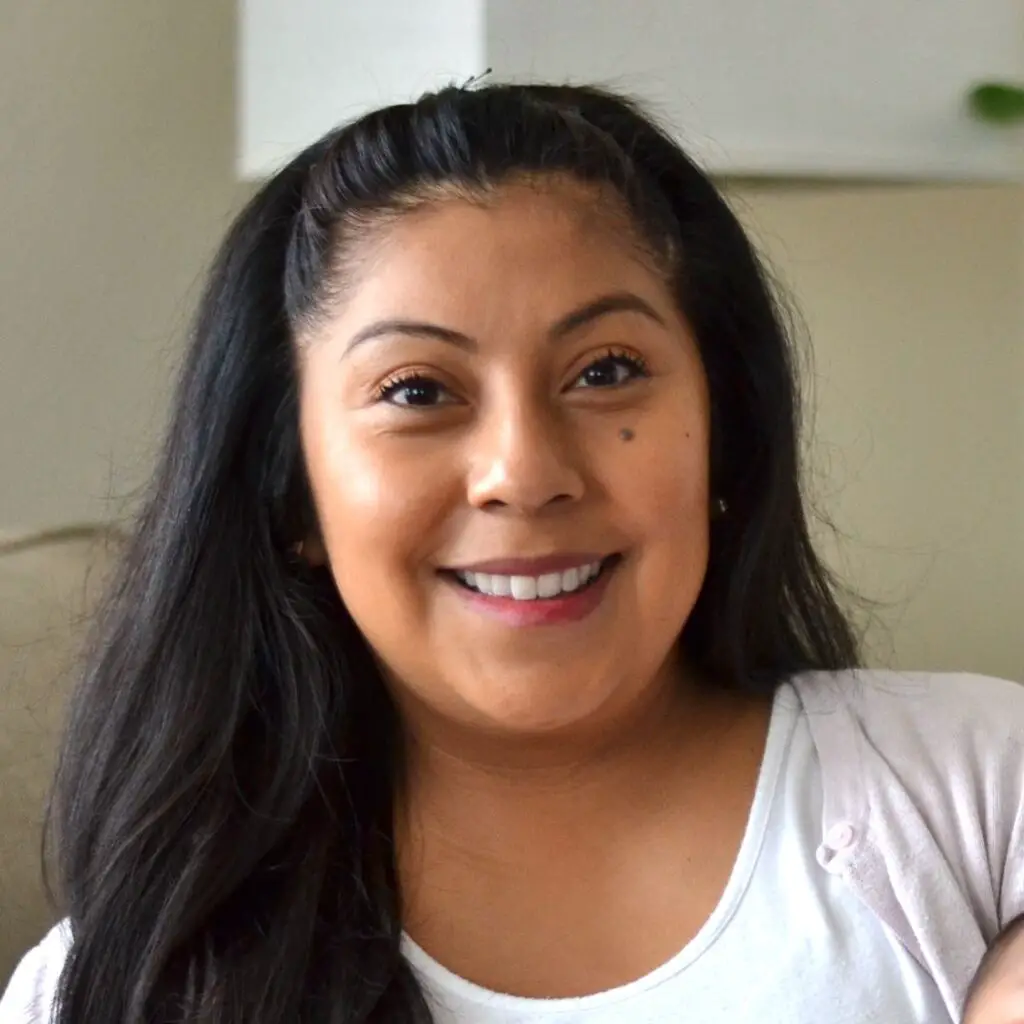
Hello, I am Leslie. I am on a mission to help you support the growth and development of your child. With the right tools and proper guidance, you can navigate parenthood with confidence and assertion! My goal is to equip you with knowledge to help you construct a strong foundation for your child’s life.
Suggested articles
You May Also Like
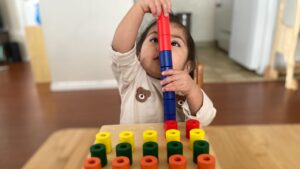
Practical Guide To The Montessori Method At Home
In this practical guide to the Montessori method at home, I will share five strategies on how to apply the Montessori method at home. I will also give you five common mistakes you should avoid so you can help your child thrive.
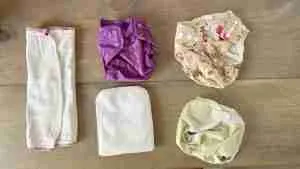
6 Types Of Cloth Diapers: Comparison, Cost, Pros And Cons
The six types of cloth diapers are All-in-One (AIO), All-in-Two (AI2), Pocket, Prefold, Fitted, and Flat. We share everything you need to know about cloth diapers.
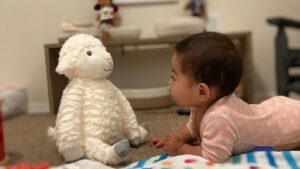
Simple Tips On How To Create A Montessori Room
A Montessori room is a type of educational environment for young children that emphasizes hands-on learning and exploration. It is designed to support the child’s natural development and encourage independence, creativity, and self-discovery.
